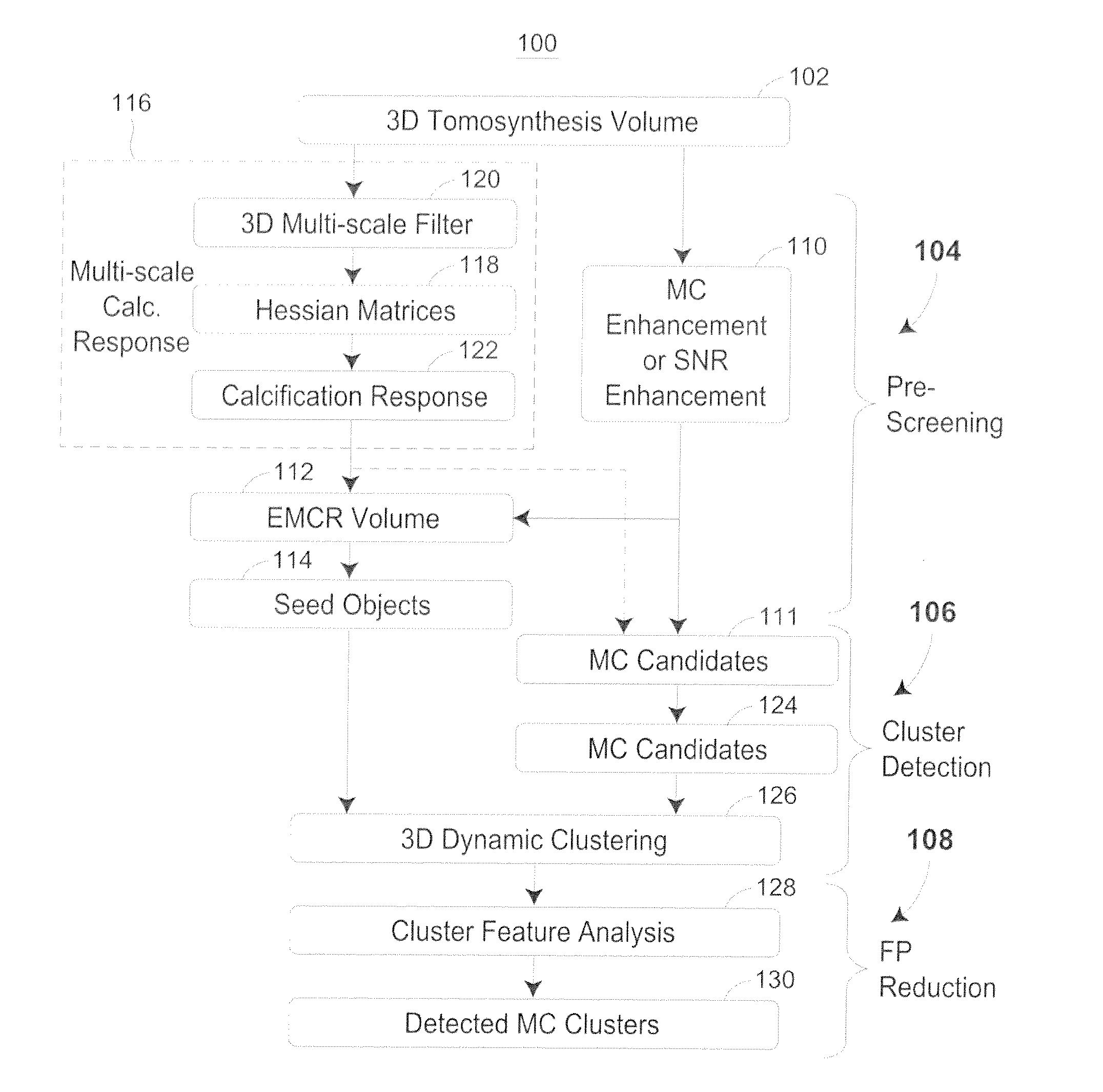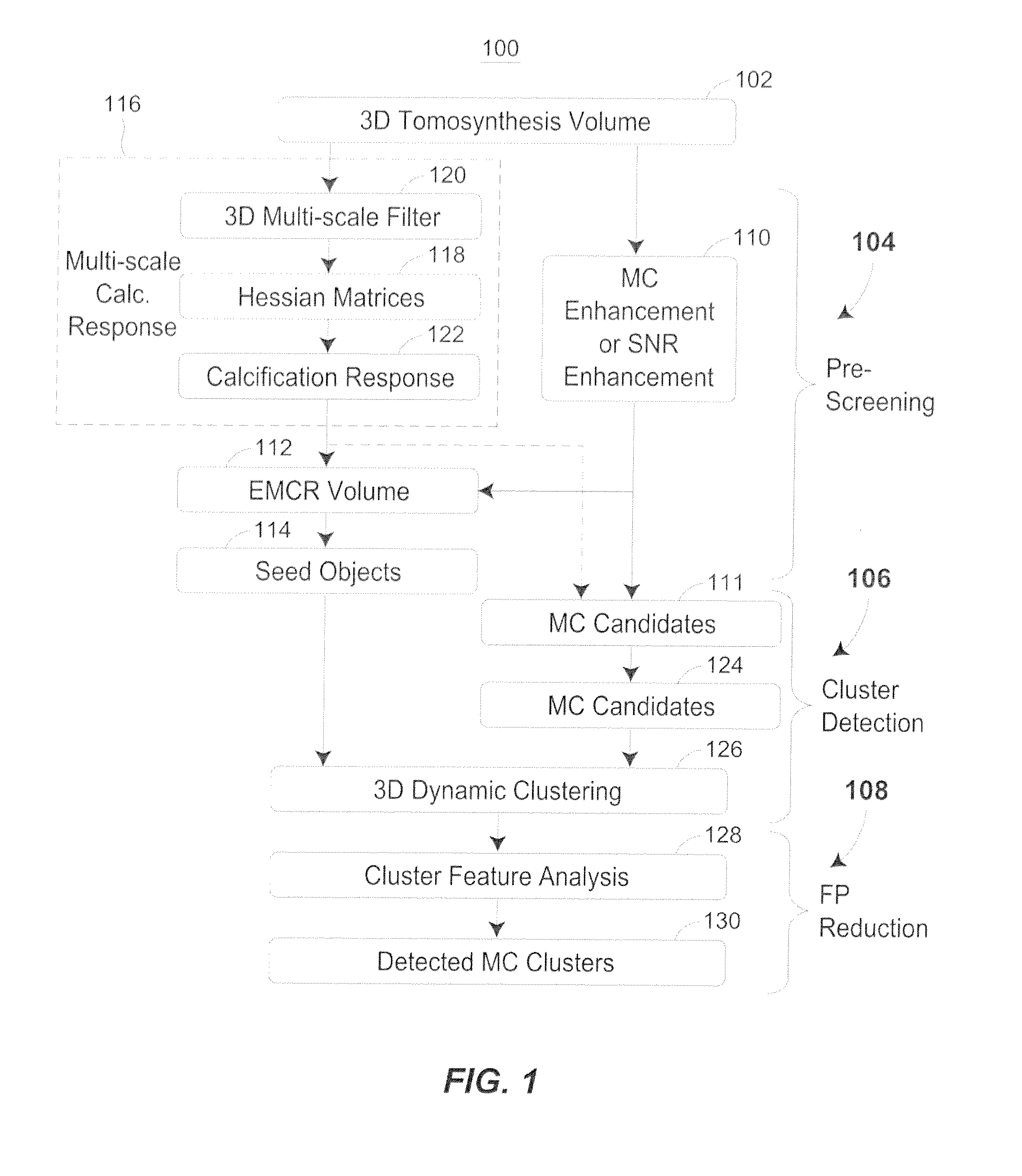Methods for Microalification Detection of Breast Cancer on Digital Tomosynthesis Mammograms
a technology of digital tomosynthesis and breast cancer, applied in the field of breast cancer detection, can solve the problems of high recall rate of about 10%, limited sensitivity of dense breasts, and radiologists not detecting all carcinomas, so as to reduce the number of false positives, enhance the 3d calcification response function, and increase the visibility of microcalcification-like objects.
- Summary
- Abstract
- Description
- Claims
- Application Information
AI Technical Summary
Benefits of technology
Problems solved by technology
Method used
Image
Examples
Embodiment Construction
[0038]FIG. 1 discloses an exemplary flow chart of a computer-aided detection (CAD) method 100 for clustered microcalcifications in digital breast tomosynthesis (DBT). The method may begin with generation or collection of a plurality of DBT mammograms using a DBT mammography system. The DBT system may acquire, for example, 11 to 25 PVs over an arc of 15 to 60 degrees in various increments (e.g., 3 degree increments). The DBT system may use a full-field digital detector, for example, a CsI / a-Si flat-panel or an amorphous-Se flat panel detector. The digital detector may be stationary or moving during image acquisition. The breasts may be imaged in either the craniocaudal (CC), mediolateral oblique (MLO), or other views. The DBT volumes may be reconstructed at a 1-mm-thick or other slice interval using a simultaneous algebraic reconstruction technique (SART) or other tomosynthesis reconstruction technique.
[0039]With reference to FIG. 1, a method 100 uses the tomosynthesized DBT slices o...
PUM
 Login to View More
Login to View More Abstract
Description
Claims
Application Information
 Login to View More
Login to View More - R&D
- Intellectual Property
- Life Sciences
- Materials
- Tech Scout
- Unparalleled Data Quality
- Higher Quality Content
- 60% Fewer Hallucinations
Browse by: Latest US Patents, China's latest patents, Technical Efficacy Thesaurus, Application Domain, Technology Topic, Popular Technical Reports.
© 2025 PatSnap. All rights reserved.Legal|Privacy policy|Modern Slavery Act Transparency Statement|Sitemap|About US| Contact US: help@patsnap.com



